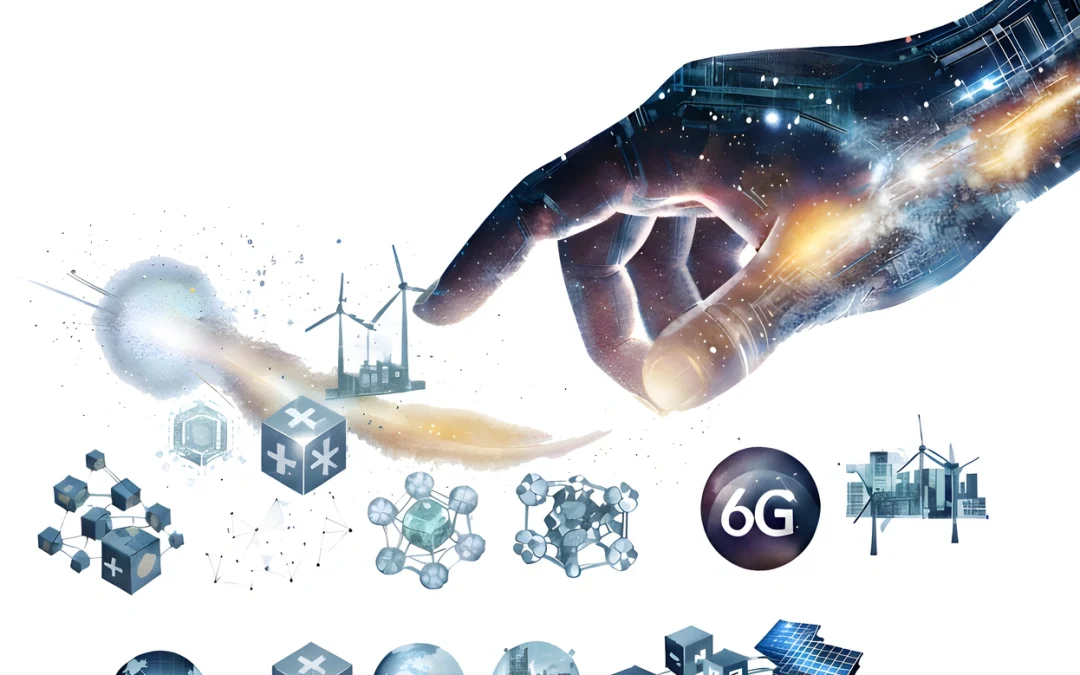If you’re fascinated by where tech is actually heading (not the hype, but the engineering, policy and real-world use cases), Eduardo Garbayo’s Disruptive Horizons is a crisp, well-grounded tour of the next ten years. It reads like a guided map: ambitious but measured, optimistic but clear-eyed about risks and governance.
Why this book matters
Garbayo doesn’t just list flashy breakthroughs — he explains how ten converging technologies are likely to interact, what practical problems they’ll solve, and what social and regulatory choices will determine whether those innovations benefit many or few. The book uses a clear assessment framework to balance scientific indicators, investment trends, adoption curves and governance — which makes the analysis useful both to curious readers and to practitioners.
A quick tour of the ten technologies
Rather than bury readers in jargon, the book devotes a focused chapter to each major wave. Here are the ten core areas Garbayo examines, with a one-line sense of why each matters:
-
Advanced Artificial Intelligence (AI): From powerful generative models to AI embedded across industries — huge productivity gains, big governance questions.
-
Quantum Computing: Aiming at intractable problems in chemistry, materials and cryptography; still early but scaling fast.
-
Nuclear Fusion: The long-promised low-carbon power source; pilot plants and private entrants make this decade critical.
-
6G Networks: Terabit speeds, ultra-low latencies, and integration of terrestrial + satellite links for ubiquitous connectivity.
-
Biotechnology & Genomic Editing: CRISPR and next-gen editing reshaping medicine, agriculture and bio-manufacturing.
-
Brain–Computer Interfaces (BCIs): From clinical implants to consumer headsets — new frontiers in communication and augmentation, with profound ethical stakes.
-
Augmented Reality (AR): Spatial computing and haptics that could redefine work, training and social presence.
-
Blockchain, Web3 & Finance: Tokenization, DeFi, and new governance models — potent, but requiring careful regulation and usability fixes.
-
Clean Energy & Storage: Solid-state batteries, green hydrogen, CCS and grid innovations that will determine decarbonization speed.
-
Electromagnetism & Other Emerging Materials/Devices: Photonics, integrated optics and advanced materials enabling the hardware side of many breakthroughs.
Strengths — what the author does well
-
Balance of big picture + concrete data. The author pairs vivid scenarios with market figures, patent trends and policy moves so claims feel evidence-based rather than speculative.
-
Interdisciplinary perspective. Technology, economics, governance and ethics are woven together; this helps readers see tradeoffs rather than techno-utopia.
-
Readable structure. Each chapter is aimed at a general audience but rich enough for professionals looking for a concise briefing.
A few caveats the book itself flags
The author is explicit that forecasts can fail and that blind spots exist — a chapter on “what we don’t see coming” reminds readers that surprises and serendipity shape real trajectories. That humility strengthens, rather than weakens, the book’s credibility.
Who should read it
-
Tech leaders and product managers who want a strategic horizon scan.
-
Policy makers and civic technologists seeking an accessible brief on regulatory choices.
-
Curious readers who want a thoughtful synthesis of where investment, science and social debate are converging.
Final take
Disruptive Horizons is both a wake-up call and a roadmap. It invites readers not merely to admire the technologies it profiles but to participate in shaping how they’re deployed — a view underscored in the epilogue’s call to civic and ethical engagement. If you want a compact, well-argued guide to the most consequential innovations of the coming decade, this book delivers.


